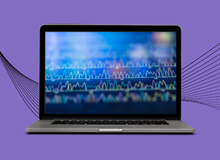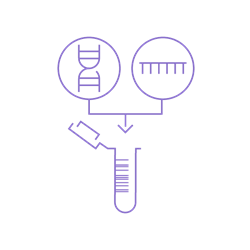Sanger-EZ
Effortlessly unlock research success with Sanger-EZ, a convenient and reliable prepaid sequencing solution. Our kit of 96 pre-mixed barcoded tubes is designed to streamline research processes by eliminating the need for online ordering, enabling you to focus on the critical aspects of your research. With the introduction of our automated ordering system, Sanger-EZ offers the flexibility to submit all 96 samples at once or just one sample at a time. Simply order the kit directly from our online customer portal and submit samples in your nearest dropbox or via a local courier service.
Sanger-EZ Workflow
Features and Benefits

Sanger Sequencing Quick Tips Guide
Learn from the Sanger experts how you can get the most of your DNA Sequencing. Whether you’re troubleshooting a tough sequencing reaction, perfecting PCR visualization, or learning to clean up and refine your PCR products, these resources are designed to help you get the best results.
• Volume 1: Producing Robust, Single-band PCR Product
• Volume 2: PCR Clean-up of Single-band PCR
• Volume 3: Salvaging Nonspecific PCR Products
• Volume 4: PCR Visualization by Gel Electrophoresis
• Volume 5: Troubleshooting a Bad Sequencing Reaction from a PCR Template

Blog | Troubleshooting DNA Templates with Sanger Sequencing
Sanger sequencing is highly effective for testing small targeted genomic regions and for validating results from NGS. However, as with all sequencing technologies, there are limitations and needs for troubleshooting. Read on to learn about the three basic troubleshooting steps we recommend to start with.

Blog | Ensure Complete Plasmid Validation on Your First Attempt with Oxford Nanopore Sequencing
Explore the cutting-edge realm of genomic research with Oxford Nanopore Sequencing (ONT), and how this innovative Next Generation Sequencing technology offers real-time, long-read capabilities, revolutionizing our approach to decoding genetic information.

Webinar | From Base Pairs to Breakthroughs: Understanding Sanger and Oxford Nanopore Sequencing
While Sanger sequencing remains the gold standard for accurate DNA sequencing, advancements in sequencing technology, such as Oxford Nanopore Technology (ONT), have provided a cost-effective, long-read alternative for analysis. In this workshop, delve into the considerations of each technique and discover how to interpret their resulting sequencing data effectively so you can capture the benefits of both approaches for your specific needs.

Blog | Analyzing Sanger Sequencing Data
The output for Sanger sequencing is typically a chromatogram, also known as a trace or ab1 file, and a text-based sequence file. Although the latter may seem to hold all the relevant information—after all, the point of sequencing is to get a sequence—the former can’t be ignored. Here, we provide a guide to understanding Sanger sequencing data.



